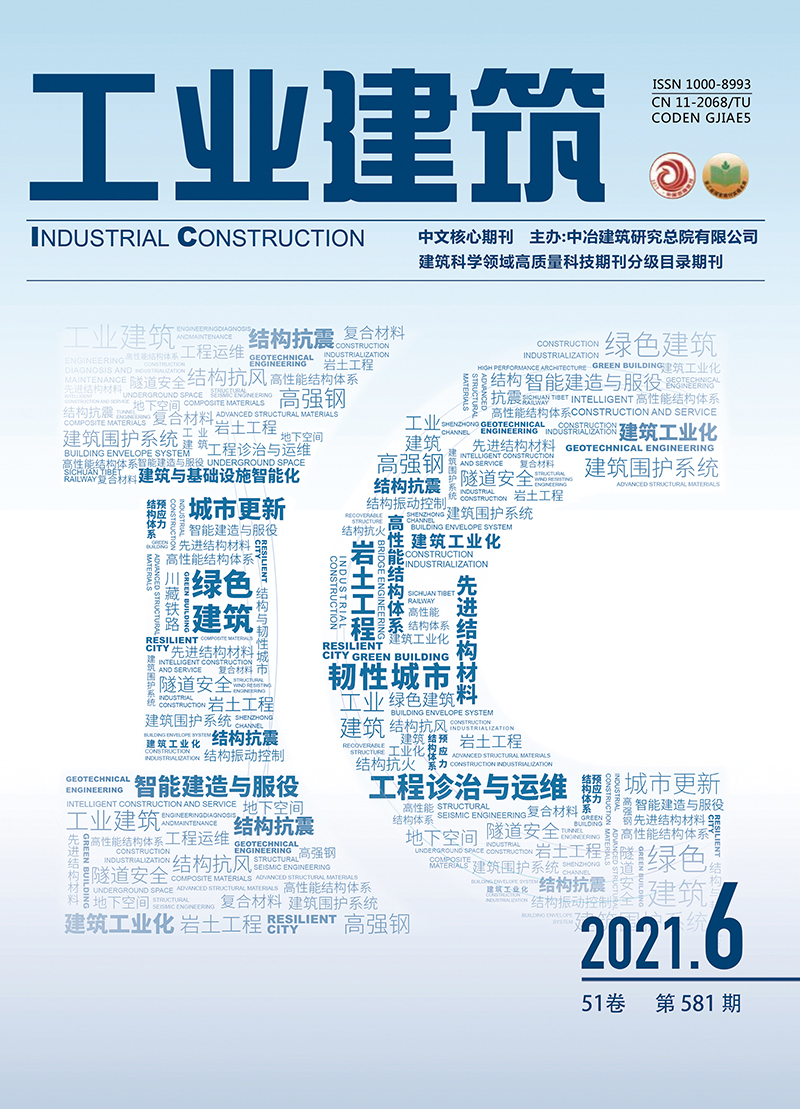| [1] |
武雷, 杨超一, 万志明. 混凝土打印成型建模技术研究[J]. 工业建筑, 2020, 50(8):22-27.
|
| [2] |
张大旺, 王栋民. 3D打印混凝土材料及混凝土建筑技术进展[J]. 硅酸盐通报, 2015, 34(6):1583-1588.
|
| [3] |
张超, 邓智聪, 侯泽宇, 等. 混凝土3D打印研究进展[J]. 工业建筑, 2020, 50(8):16-21.
|
| [4] |
刘巧玲, 杨钱荣. 聚合物对3D打印建筑砂浆性能影响研究[J]. 建筑材料学报, 2020, 23(5):1206-1211.
|
| [5] |
孙晓燕, 乐凯迪, 王海龙, 等. 挤出形状/尺寸对3D打印混凝土力学性能影响研究[J]. 建筑材料学报, 2020, 23(6):1313-1320.
|
| [6] |
PANDA B, MOHAMEL N A, PAUL S C, et al. The Effect of Material Fresh Properties and Process Parameters on Buildability and Interlayer Adhesion of 3D Printed Concrete[J]. Materials, 2019, 12:1-12.
|
| [7] |
LE T T, AUSTIN S A, LIM S, et al. Mix Design and Fresh Properties for High-Performance Printing Concrete[J]. Materials and Structures, 2012, 45:1221-1232.
|
| [8] |
MA G W, LI Z J, WANG L. Printable Properties of Cementitious Material Containing Copper Tailings for Extrusion Based 3D Printing[J]. Construction and Building Materials, 2018, 162:613-627.
|
| [9] |
杨钱荣, 赵宗志, 肖建庄, 等. 矿物掺合料与外加剂对3D打印砂浆性能的影响[J]. 建筑材料学报, 2021,24(2):412-418.
|
| [10] |
赵仁文. 立井井壁3D打印混凝土配合比优化及其硬化性能研究[D]. 徐州:中国矿业大学, 2019.
|
| [11] |
TATERSALL G H, BANFILL P G F. The Rheology of Fresh Concrete[M]. London:Pitman Advanced Publishing Program, 1983.
|
| [12] |
ROUSSEL N. Rheological Requirements for Printable Concretes[J]. Cement and Concrete Research, 2018, 112:76-85.
|
| [13] |
ROUSSEL N, OVARLEZ S, GARRAULT S, et al. The Origins of Thixotropy of Fresh Cement Pastes[J]. Cement and Concrete Research, 2012, 42:148-157.
|
| [14] |
ROUSSEL N. A Thixotropy Model for Fresh Fluid Concretes:Theory, Validation and Applications[J]. Cement and Concrete Research, 2006, 36:1797-1806.
|
| [15] |
KRUGER J, ZERANKA S, ZIJL G V. 3D Concrete Printing:A Lower Bound Analytical Model for Buildability Performance Quantification[J]. Automation in Construction, 2019, 106:1-14.
|
| [16] |
WOLFS R J M, BOS F P, SALET T A M. Early Age Mechanical Behaviour of 3D Printed Concrete:Numerical Modelling and Experimental Testing[J]. Cement and Concrete Research, 2018, 106:103-116.
|
| [17] |
PERROT A, RANGEARD D, PIERRE A. Structural Built-Up of Cement-Based Materials Used for 3D-Printing Extrusion Techniques[J]. Materials and Structures, 2016, 49:1213-1220.
|
| [18] |
SCHUTTER G D, FEYS D. Pumping of Fresh Concrete:Insights and Challenges[J]. RILEM Technical Letters, 2016, 1:76-80.
|
| [19] |
MECHTCHERINE V, BOS F P, PERROT A, et al. Extrusion-Based Additive Manufacturing with Cement-Based Materials-Production Steps, Processes, and Their Underlying Physics:A Review[J]. Cement and Concrete Research, 2020, 132:1-14.
|
| [20] |
SALOUSTROS S, PELA L, CERVERA M. A Crack-Tracking Technique for Localized Cohesive-Frictional Damage[J]. Engineering Fracture Mechanics, 2015, 150:96-114.
|
| [21] |
WOLFS R J M, BOS F P, SALET T A M. Triaxial Compression Testing on Early Age Concrete for Numerical Analysis of 3D Concrete Printing[J]. Cement and Concrete Composites, 2019, 104:1-12.
|
| [22] |
JAYATHILAKAGE R, RAJEEV P, SANJAYAN J. Yield Stress Criteria to Assess the Buildability of 3D Concrete Printing[J]. Construction and Building Materials, 2020, 240:1-15.
|
| [23] |
KRUGER J, CHO S, ZERANKA S, et al. 3D Concrete Printer Parameter Optimisation for High Rate Digital Construction Avoiding Plastic Collapse[J]. Composites Part B:Engineering, 2020, 183:1-11.
|
| [24] |
METTLER L K, WITTEL F K, FLATT R J, et al. Evolution of Strength and Failure of Scc During Early Hydration[J]. Cement and Concrete Research, 2016, 89:288-296.
|
| [25] |
PANDA B, LIM J H, TAN M J. Mechanical Properties and Deformation Behaviour of Early Age Concrete in the Context of Digital Construction[J]. Composites Part B:Engineering, 2019, 165:563-571.
|


 Login
Login Register
Register E-alert
E-alert







 DownLoad:
DownLoad: